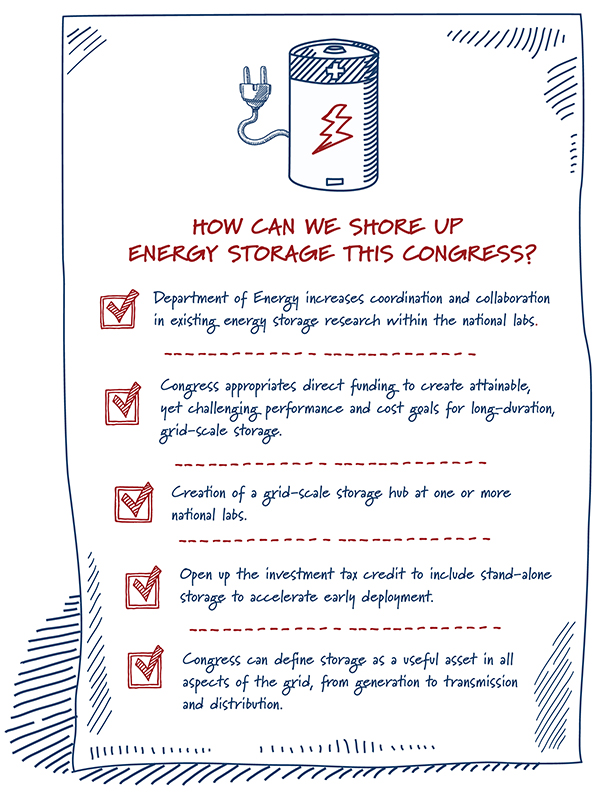
WHAT’S NEXT FOR ENERGY STORAGE?
With wind and solar an ever-increasing percentage of our power generation (see more on that below), lawmakers and the Trump administration have a even-greater need to set additional policy changes and smart investments toward next-generation grid-scale energy storage and batteries.
Last Congress, bipartisan House and Senate bills were introduced to establish “moonshot” goals for energy storage at DOE in order to prioritize R&D efforts. Language was signed into law that would direct federal dollars towards these goals.
However, Congress still should pass language giving broad authorization to direct the DOE to set and meet moonshot storage goals. These more direct goals would help create lower-cost and more durable grid-scale storage, including batteries.
Congress can also use authorizing language to define storage as a useful asset to all aspects of the grid. Doing so could open up a truly free storage market and prohibit regions from defining storage solely as a generating source, when its benefits could be much bigger for the grid.
“No one technology type will meet our storage needs,” ClearPath policy analyst Faith Smith said at a Capitol Hill energy storage briefing hosted by the Information Technology and Innovation Foundation this week. “Increased R&D in a diverse set of long-duration solutions is needed to fill a variety of needs across different regions.”
So what is the current state of energy storage technologies?
Faith and ClearPath production designer Mitch Kersey have put together a handy explainer detailing the types of technologies – thermal, chemical and mechanical – that make up the current crop, new promising technologies and the broader role energy storage may play.
There is a need particularly to move beyond lithium ion for energy storage and batteries, due both to their lack of long-term durability and their inclusion of cobalt, which is mined mainly under the Democratic Republic of the Congo’s dubious safety and child labor laws.
|